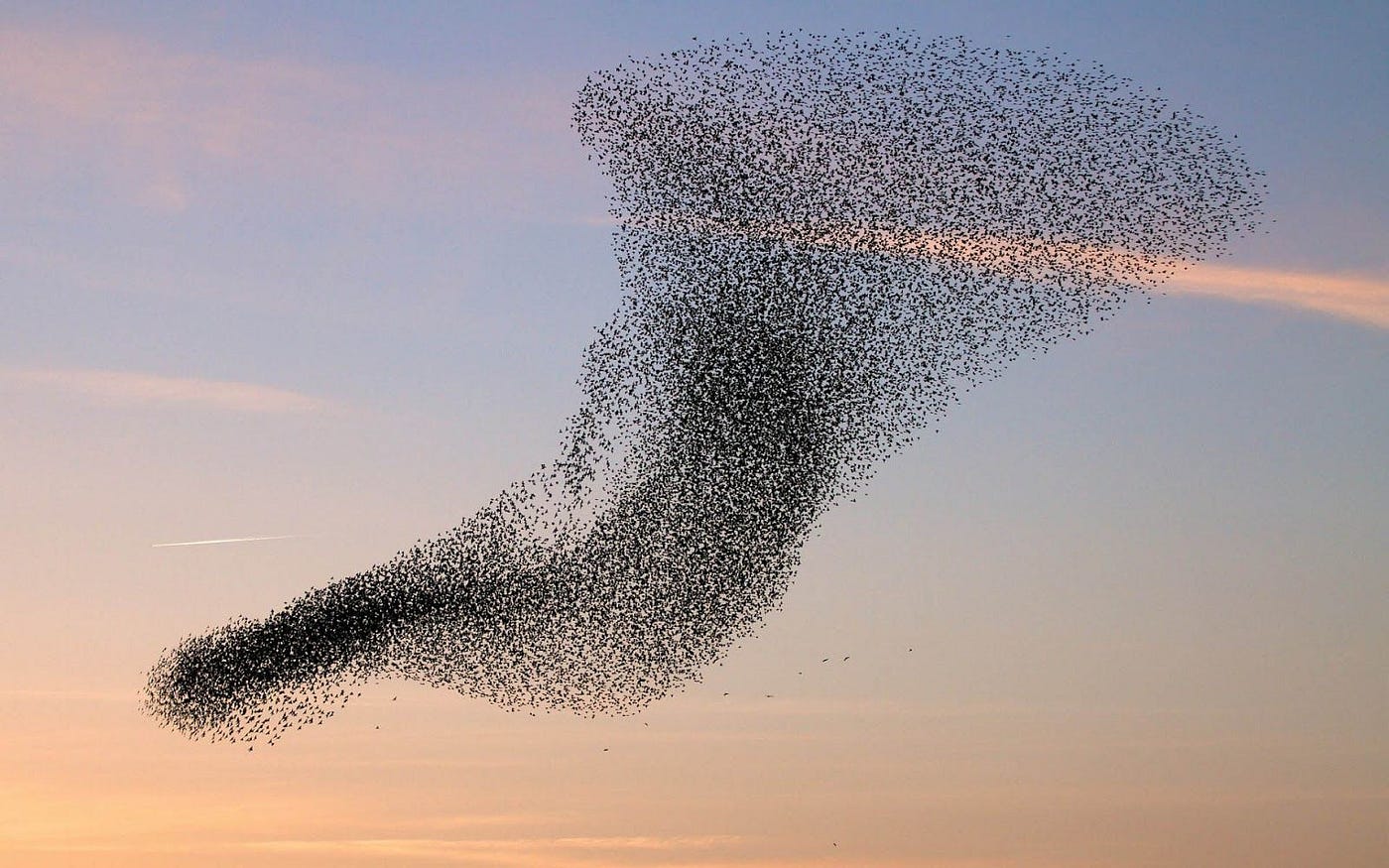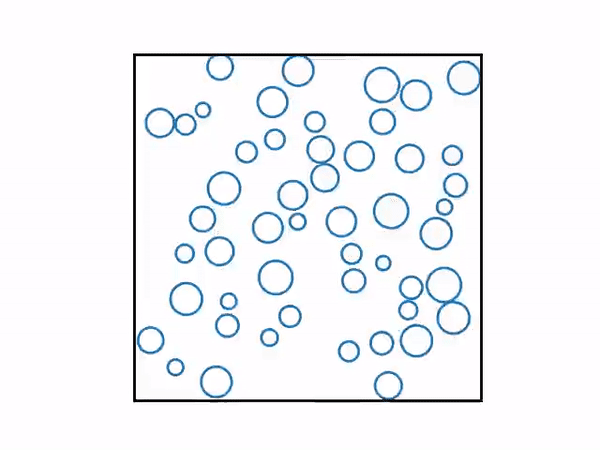Originally posted on Substack
“An artist’s concern is to capture beauty wherever he finds it.” - Kazuo Ishiguro
What does generative art look like in the future?
As much as I enjoy investigating the path that the discipline of generative art has taken in the past 60+ years; I also have been thinking about what the future may hold in this space.
So what I am going throw out there has yet to be fully thought through. But I haven’t come across much in these spaces, so if you have seen something I’d love to see it and discuss it further So


Interactive Generative Art in AR
I’ve seen some of the work Zach Lieberman has done with the AR Kit from Apple in the past couple of years. You can say that Instagram’s or Snapchat’s filters have some of this in various ways as well. You can paint places with apps such as Adobe Aero and use assets to create scenes in a world.
But what if the AR generative piece would differ based on the location by which it is viewed?
Take a busy street in your favorite city. What if you can see the algorithmic compilation of people walking down the street in a ghostlike fashion from people recorded previously. These captures could be captured over decades and then listened to as a way to possibly hear fashion over time as different fabrics brush against another passerby. Or the strange silence of another COVID-like event?
How about protest art, you might be able to create a generative piece that would give one an idea of the water level in the location of which they stand.
Some of this is constrained due to the computational power of mobile devices, so this may still be a bit in the future but you can use the inputs of the past to create a generative future.

Quantum Generative Art
We are but on the onset of quantum computers which have yet come into the hands of anyone but the scientists. There could be potential for generating some of the most expansive and complex worlds. Think about flocking algorithms but with 10X more variables that influence the system. I can see us creating some of the most complex generative systems if the theoretical basis of quantum computation holds to be true.
Virtual Reality NFT Installations / Interactive
With the exploding growth we have seen in the NFT world, this has to be the starting point in having curated virtual installations for the work that has been collected. We’d get the gallery walkthrough and that would be an amazing start. But what if there is an opportunity to create a space in the VR world in which someone can experience a new phenomenon altogether. I know game design has walked down this path, but what would this world look like if a Dmitri Cherniak would make it?

Can you imagine walking through an entire room in which the following rounded squares could be hovering in different locations. If you went close it would pull away quickly, but then become interested enough to check out the insider?
Generative Synthetic Biology
This by far is a very interesting space to be in. I believe that Neri Oxman has done with her material ecology work she has done in the past decade. But what’s next, this is by far stellar work

Could we grow certain plants or organisms that might appear somewhat similar to what is above?
All of these are moonshot ideas, but the beauty of art and creativity is we can take ourselves and our audience to places that otherwise never would be possible. I’d love to continue work on these sorts of projects and generate a base in which we can give others the creative freedom to entirely create the impossible.
I hope that this inspires and excites you as it does me.
Much love and peace,
Chris Ried
Noise Fields
In case you wanted to play around with some more code, the following was made in processing using essentially the following algorithm. I’ve pulled out some of the color elements out but you get the idea and can find some interesting use cases for it.

float x, y, n, noise_factor, noise_level;
long nx;
color c, c1;
void setup()
{
size(1000, 1000);
background(0);
noise_factor = 0.002;
c = color(255);
c1 = color(100);
n = 1;
noise_level = 0.8;
}
void draw() {
background(0);
for(int l = 0; l < 5; l++)
{
for(int j = 0; j < width; j++)
{
for(int k = 0; k < height; k++)
{
n = noise(j*noise_factor,k*noise_factor);
if(n > 0.3 & n < 0.4 )
{
if(n > 0.35 & n < 0.37)
{
if(random(1) > noise_level)
{
stroke(c1);
point(j,k);
}
} else {
if(random(1) > noise_level)
{
stroke(c);
point(j,k);
}
}
}
}
}
nx++;
noiseSeed(nx);
filter(BLUR,0.5);
}
//stop();
//saveImage();
}
Inspirations
A couple of images from across the beautiful scape of generative art that has been inspiring for the week




Sources: wblut, cyber.ia, mattdesl, michael.kennan
🖌️ Unconventional Media
Ferrofluid Sculptures
{{ youtube n8Zvyr2Bc5Y }}
IN THE EARLY 1960s, a NASA engineer by the name of Steve Papell dreamed up a career for modern-day artist Eric Mesplé. Well, at least not directly. Papell was trying to figure out how to move fuel around an engine in zero gravity, and hit upon the idea of a “ferrofluid.” By adding magnetic nanoparticles to a liquid, you can magnetize the medium. Apply a magnetic field, and suddenly that liquid behaves like no other on Earth.
📸 Generative Graphics

Simulating Bird Flock Behavior in Python Using Boids
Maybe you have been captivated by the mesmerizing flow of a flock of birds flying against the setting sun. Hundreds, or even thousands, of birds flying together, forming endless shapes as if they were one entity are an incredible sight. This is a romantic scene for many people, but today is not the day for poetry or romance. Instead I am going to implement something similar in Python, taking one small step towards forming an understanding of complex systems.

Procedural Hydrology: Dynamic Lake and River Simulation
After implementing particle-based hydraulic erosion, I thought it should be possible to extend this concept for simulating other aspects of surface-hydrology. I researched existing methods for procedural river and lake generation, but wasn’t fully satisfied with what I found. Many methods focus on producing (very nice) river systems quickly using various algorithms (sometimes based on an existing height-map or the reverse problem), but lack strong realistic coupling between terrain and hydrology.

Two-Dimensional Collisions
This small Python project is a physical simulation of two-dimensional physics. The animation is carried out using Matplotlib’s FuncAnimation method and is implemented by the class Simulation. Each “particle” of the simulation is represented by an instance of the Particle class and depicted as a circle with a fixed radius that undergoes elastic collisions with other particles.
🏛️ Exhibits / Installations
https://vimeo.com/realitat/hackpact
//HACKPACT
define( “HACKPACT” ) = “1. Write some code each day for one month // 2. Document your work // 3. Share it” ;
🚤 Motion

This tutorial illustrates a simple technique for simulating 2D incompressible fluids for visual effects. We’ll skip the usual discussion of the classic Navier-Stokes equations, and instead focus on a specific implementation, much of which is derived from Jos Stam’s Stable Fluids method.
🔖 Articles and Tutorials

Why Love Generative Art?
Over the last 50 years, our world has turned digital at breakneck speed. No art form has captured this transitional time period – our time period – better than generative art. Generative art takes full advantage of everything that computing has to offer, producing elegant and compelling artworks that extend the same principles and goals artists have pursued from the inception of modern art.https://weigert.vsos.ethz.ch/2020/04/15/procedural-hydrology/

Generative Art: Origins Artists, and Exemplary Works
Generative art is a movement that emerged on the heels of modern art genres like Cubism, Dadaism and Surrealism, celebrating the chaos and serendipity of its modern predecessors. In an unprecedented move, artists utilized systems that could generate works of art with little interference on the part of the artist.

Punks, Squiggles, and the Future of Generative Media
In many ways, generative art is the tip of the spear to much larger trends related to digital art, NFTs, and digital property. Generative art is a category of digital art in which artists use a computer to intentionally introduce randomness as part of the creation process, producing both expected and unexpected results. In this article, we’ll take you through the past, present, and future of the generative art movement.

Developing a Daily Practice: Generative Art in TouchDesigner
A little over one year ago (on April 1st of 2018, no joke) I started creating and sharing daily generative art created in TouchDesigner on Instagram (@polyhop). TouchDesigner is a visual development platform for developing real-time visuals and interactive experiences. I use it to create generative art, which is at its core art that has been created with the use of an autonomous system – in this case, code that in some way determines qualities of the output. Much of this work is real-time, meaning it can render at 60 fps making it ideal for interactive contexts that employ sensors or visuals that react to music in a live setting.
